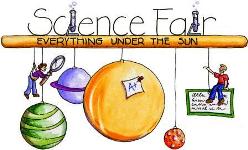





Published on Sep 05, 2023
The objective: We just started studying acids and pH. I wanted to utilize my limited after-school time to do experiments involving acids and learn practical aspects of effect of acid in daily living. During my research, I came to know that acid rain has an enormous economic impact due to its effect on rusting of metals. The purpose of my science project was to use simple, inexpensive and non-hazardous household materials to study the relationship between acid and rust formation.
My Hypothesis were:
1) Model of acid rain water will rust steel wool faster than model of normal rainwater.
2) The temperature will rise when steel wool is in contact with the acids due to the oxidation reaction.
3) The rise in temperature will be higher when steel wool is subjected to more acidic rainwater as higher H+ ion availability will likely speed up the iron oxidation process and hence the rate of rusting. Independent variables were Time & pH; Dependent variables were Temperature, Mass & Length of rust formation
I used lemon juice, vinegar and distilled water exposed to air as models for rainwater (acidic and normal rainwater) and used finest quality steel wool.
There was a rise in temperature, it occurred faster in acid rainwater models compared to normal rainwater model and was maximal at 2 min. for each acid. Both the rate of rise of temperature and the steady state temperature was highest for vinegar, an unexpected finding as it is less acidic than lemon juice (pH 3.09 vs. 2.60 respectively).
The greatest temperature difference between ending and starting temperatures was also highest in Vinegar rainwater model.
The mass of steel wool changed when measured 15 min after it was exposed to more acidic rainwater models (vinegar and lemon juice), but did not change with distilled water. Rust formation on steel wool was also greatest for vinegar model.
The results showed that the model of acid rainwater did cause rust formation, while model of normal rainwater did not. I observed a rapid rate of rise in temperature, a higher steady state temperature, a heavier mass and most rust formation with acid rainwater model (vinegar).
The normal rainwater model (distilled water exposed to air) did not cause change in mass or rust formation. The more acidic liquid (lemon) did not cause more rapid rate of rise in temperature, so my 3rd hypothesis proved to be not true.
The project studied the effect of different acids on the rate of rusting